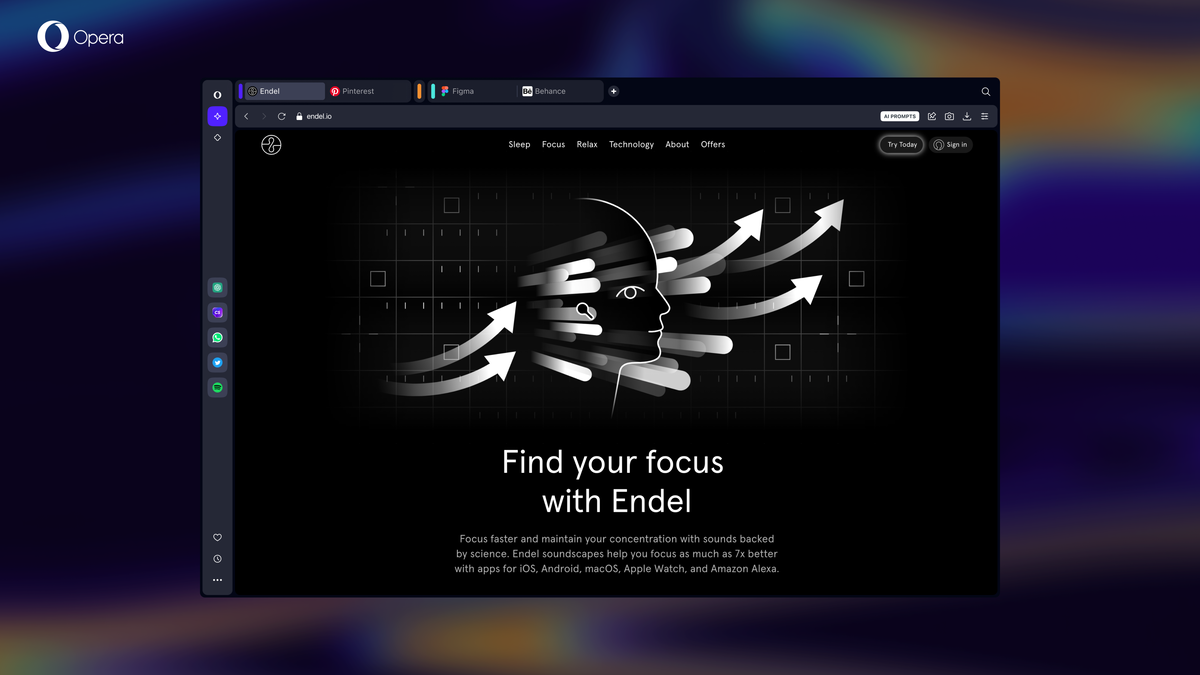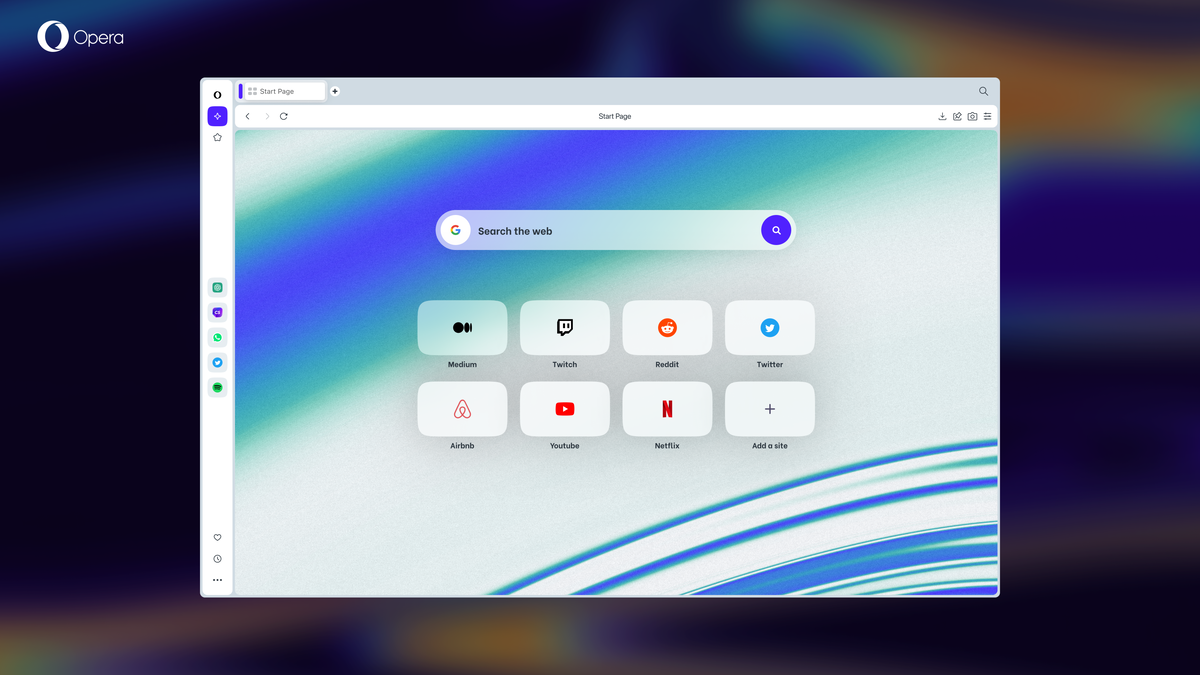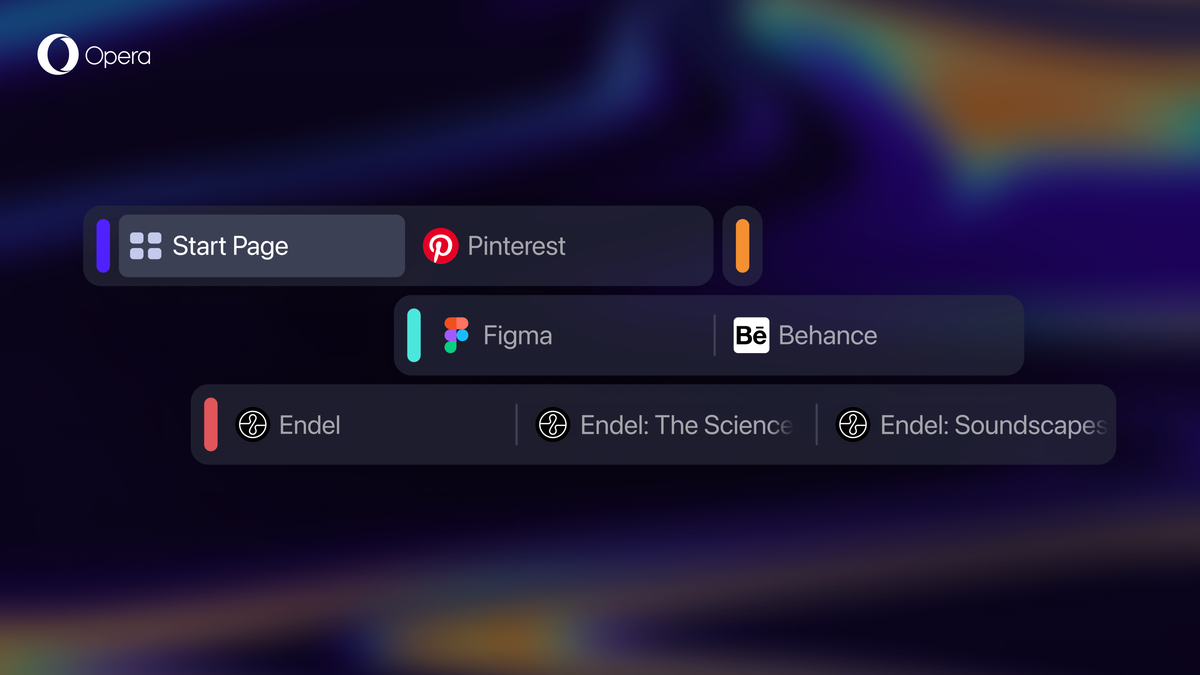Opera Software unveiled Opera One just a moment ago. Opera One is a fully redesigned web browser by the company that will replace Opera's flagship web browser in the future. For now, it is released as an early access version.
Opera One is available for the desktop operating systems Windows, macOS and Linux. The browser features a modular design, which Opera Software believes is more intuitive to the user. It is still based on Chromium, the core that the current Opera browser shares with Google Chrome, Vivaldi, Microsoft Edge, Brave and many other browser.
Besides its modular design, Opera Software claims that Opera One is the first major Chromium-based browser that supports a multithreaded compositor, and the company is also introduced a new tab management feature, which it calls Tab Islands.

Opera One's modular design allows Opera to "build a more powerful and feature-rich browser that is ready for a generative AI-based future" according to the official press release. Opera One will "dynamically adapt to the user's needs" by bringing key features to the foreground. Opera Software explains that Opera One will adjust itself based on the current context, which, the company hopes, will improve the browsing experience for users.

Existing Opera users may notice that some features are missing from the browser. Opera engineers evaluated all features for relevance, resulting in a "cleaner, decluttered look with plenty of space for future AI-based features and extensions in both the browser sidebar and address bar". Opera's recently introduced AI prompt features are turned on by default in Opera One.
A look at Opera One's design confirms the cleaner look. The browser has no title bar, the first bar lists open tabs powered by the tab islands feature. Below that is the address bar, which spans almost the entire width of the interface. Some icons and buttons are removed, including the Home button, and some have been moved to different locations.
Multithreaded Compositor delivers a "faster and smoother user interface layer" according to Opera Software.

Tab Islands is a tab management feature that looks similar to the tabs groups feature of Chromium on first glance. Opera One opens related tabs in the same tab group, called island by Opera Software, to improve accessibility and manageability. Tab Islands use Opera One's modular design. They use color codes and can be expanded or collapsed no the tab bar.
The feature is turned on by default in Opera and the creation of new Tab Islands is automatic. Opera One users may also create Tab Islands manually by selecting tabs with Ctrl/Cmd-clicks and right-clicking on the selection. Tabs can also be moved around.
Enthusiasts may download the first developer build of Opera One from the Opera website right now. It needs to be noted that this is a beta build, which may not be feature complete and may have issues.
Closing Words
Opera Software is betting big on modularity and AI in browsers. While it is up for debate how successful the switch will be, especially considering that existing Opera users will be switched over at one point in time, it is definitely a move that distinguishes Opera Software's browser from other Chromium-based browsers.
The idea to use AI in the browser to put the focus on actions based on context is bold, and it remains to be seen how this will turn out.
Now You: will you download and try Opera One?
Thank you for being a Ghacks reader. The post Opera One: fully redesigned Opera browser and big bet on AI appeared first on gHacks Technology News.

0 Commentaires